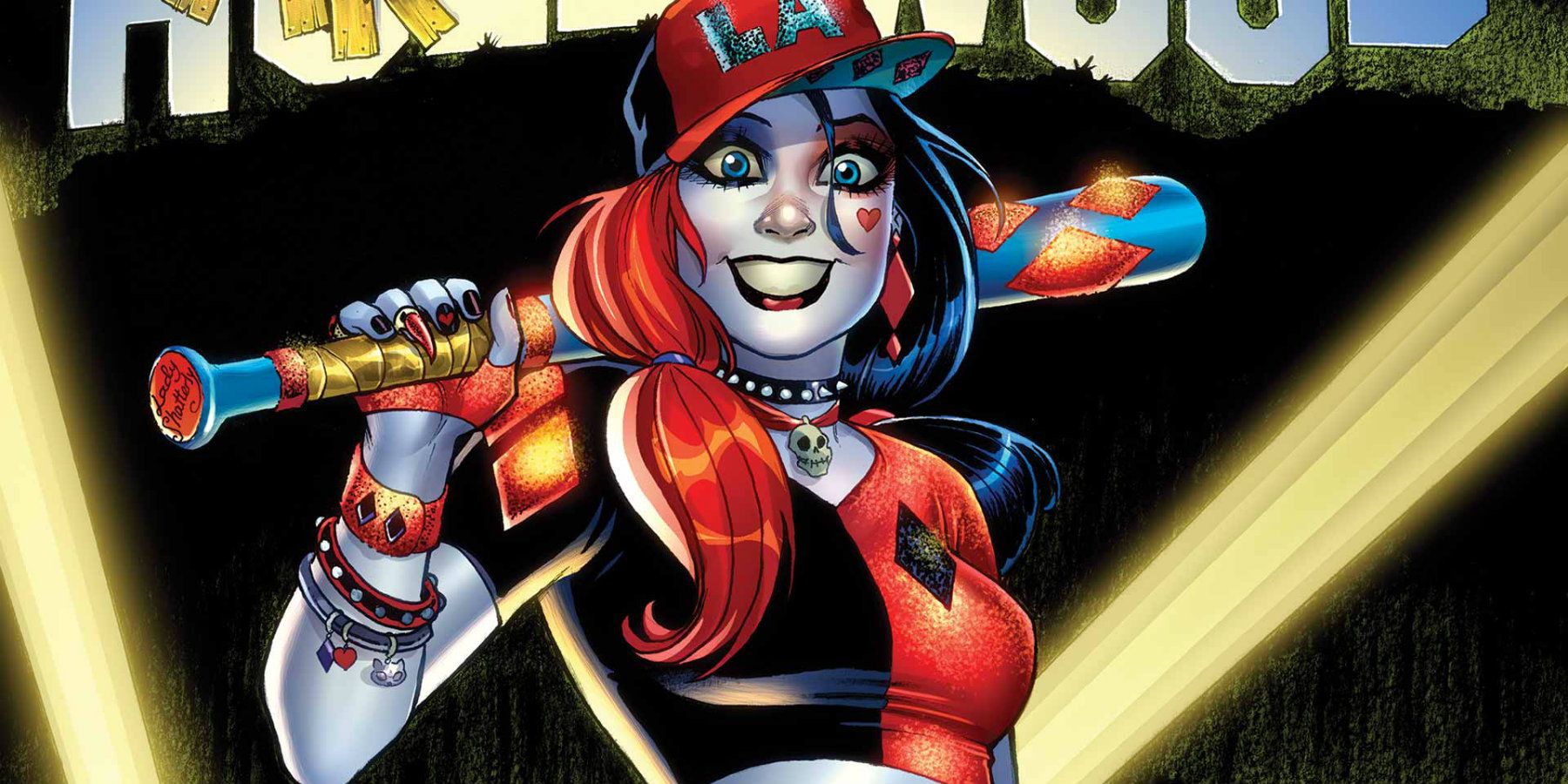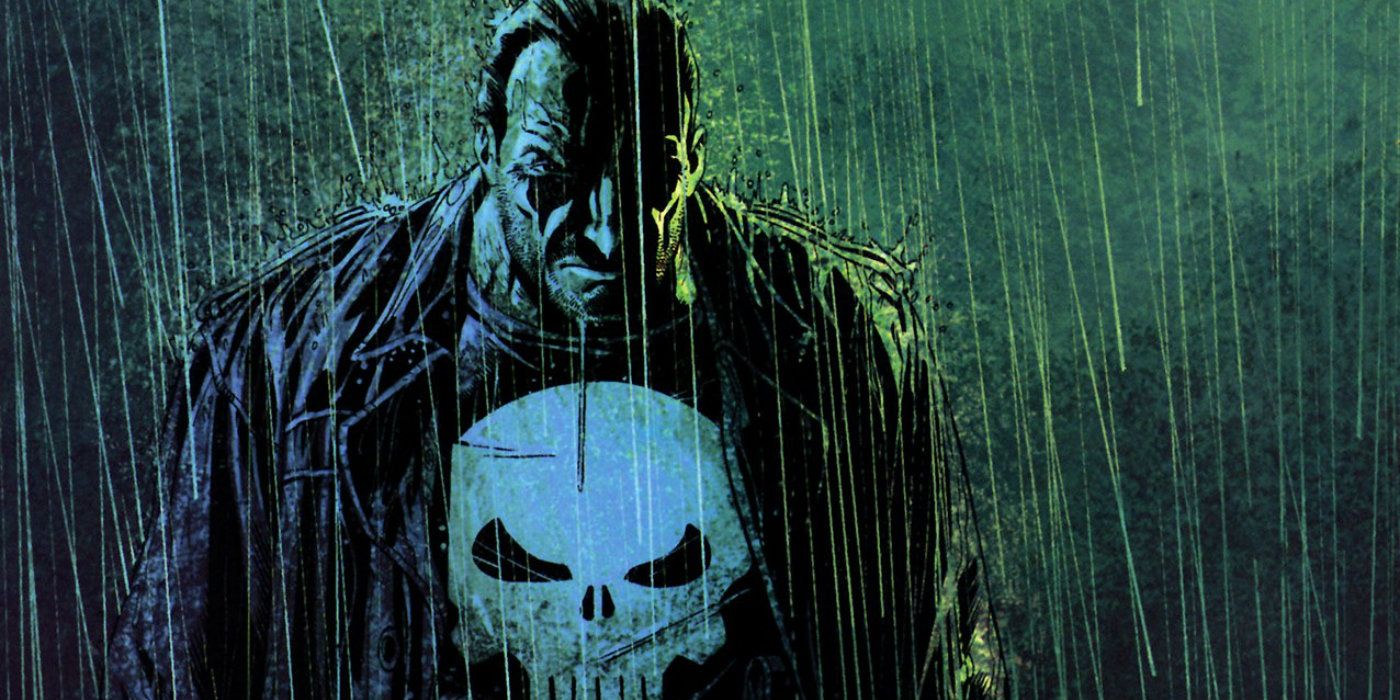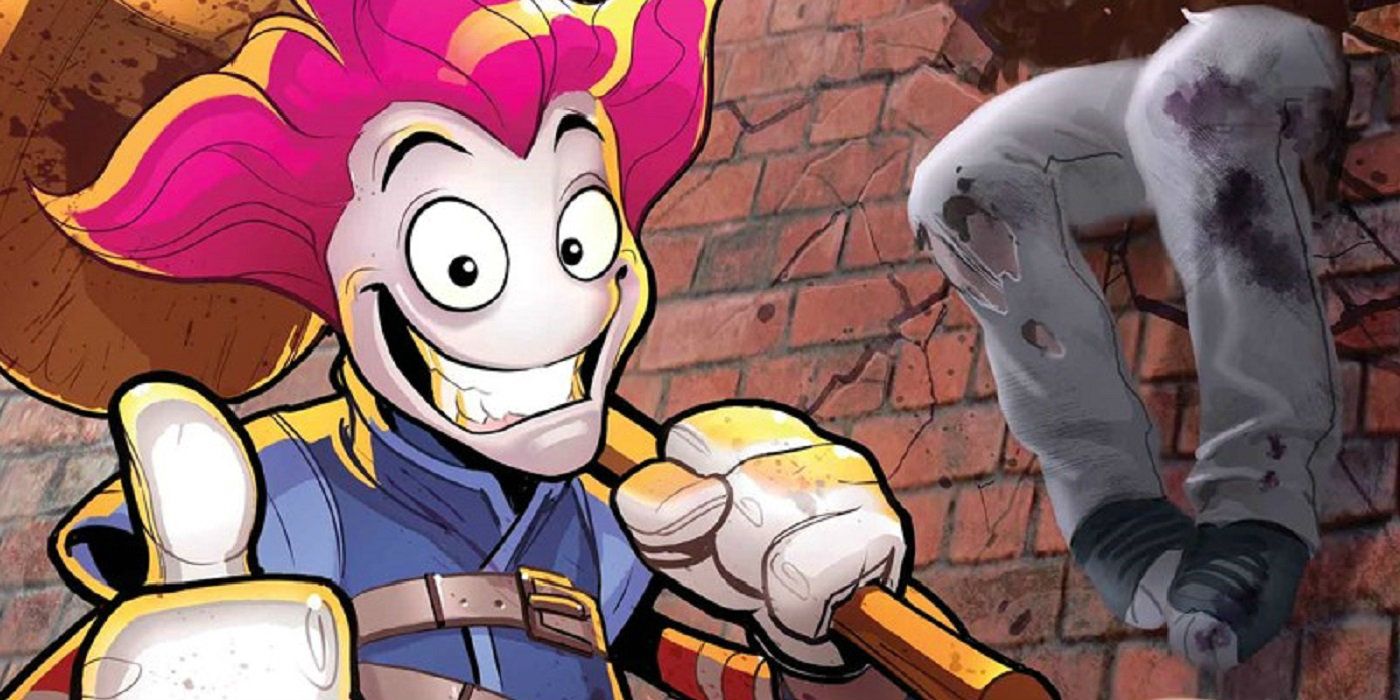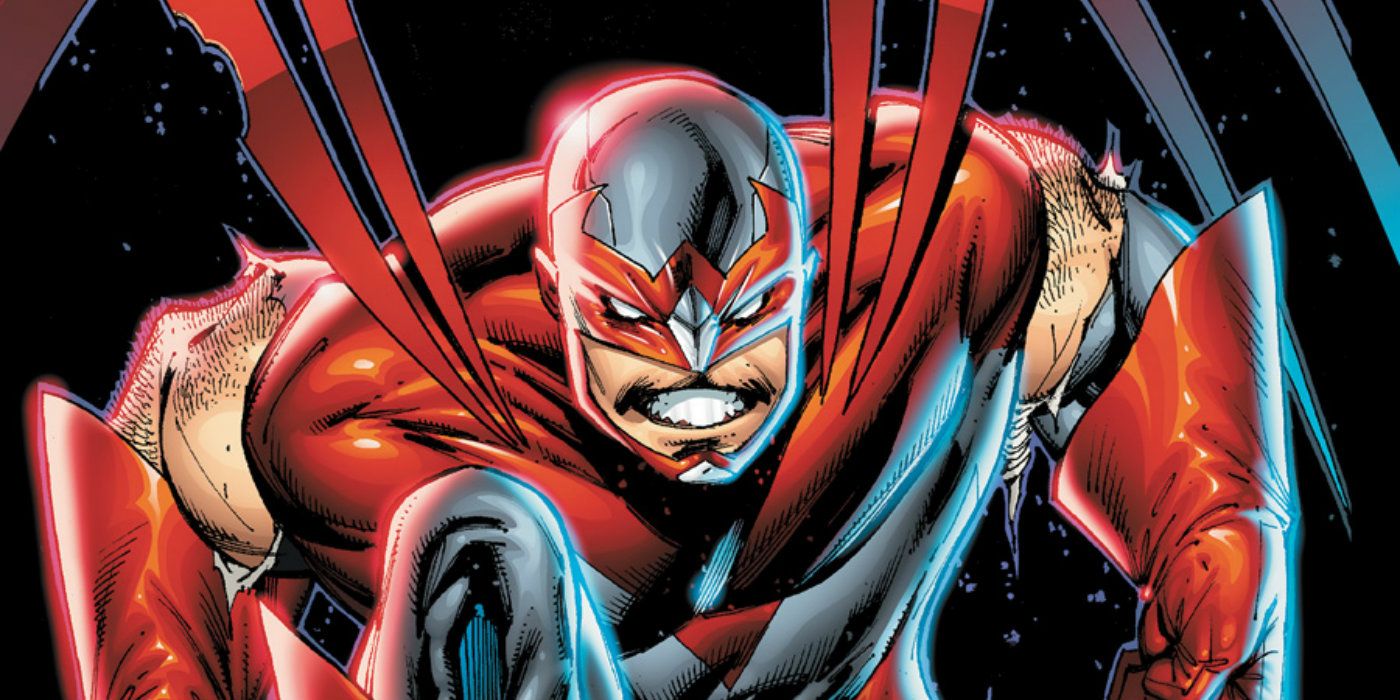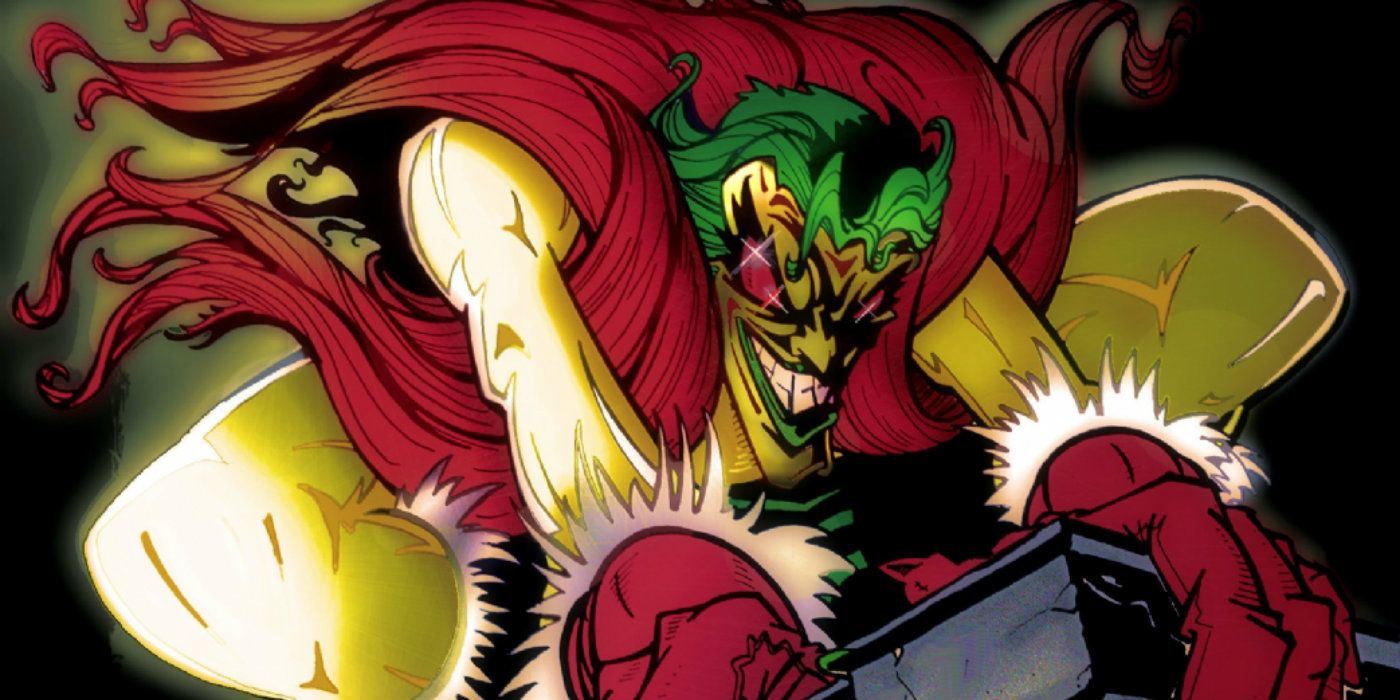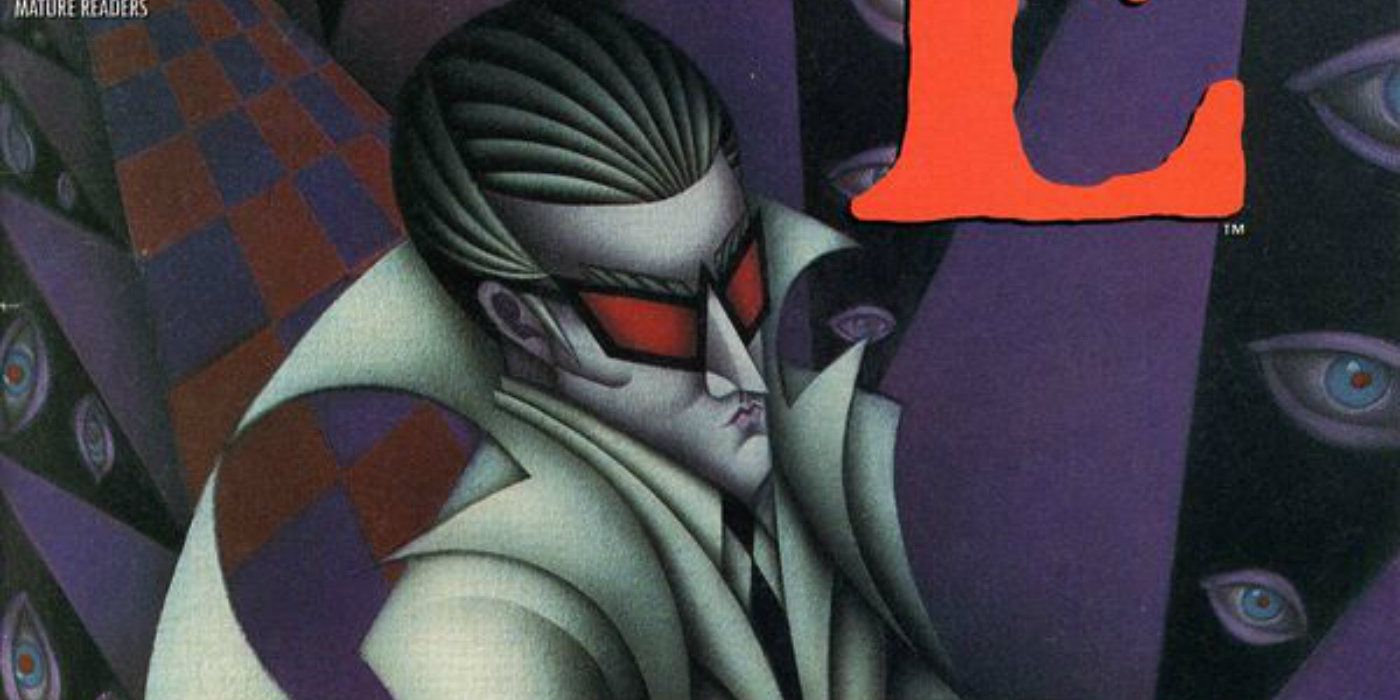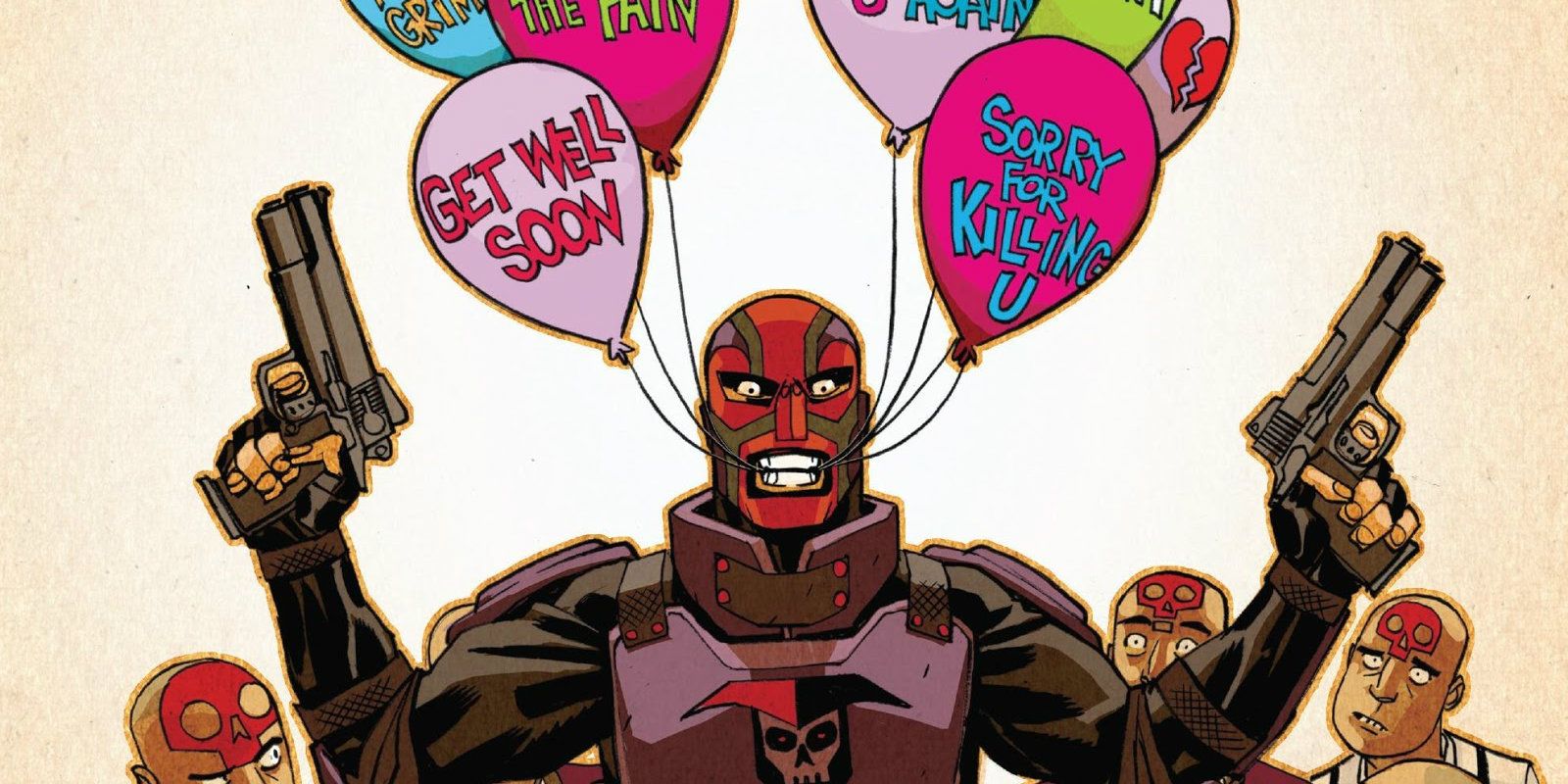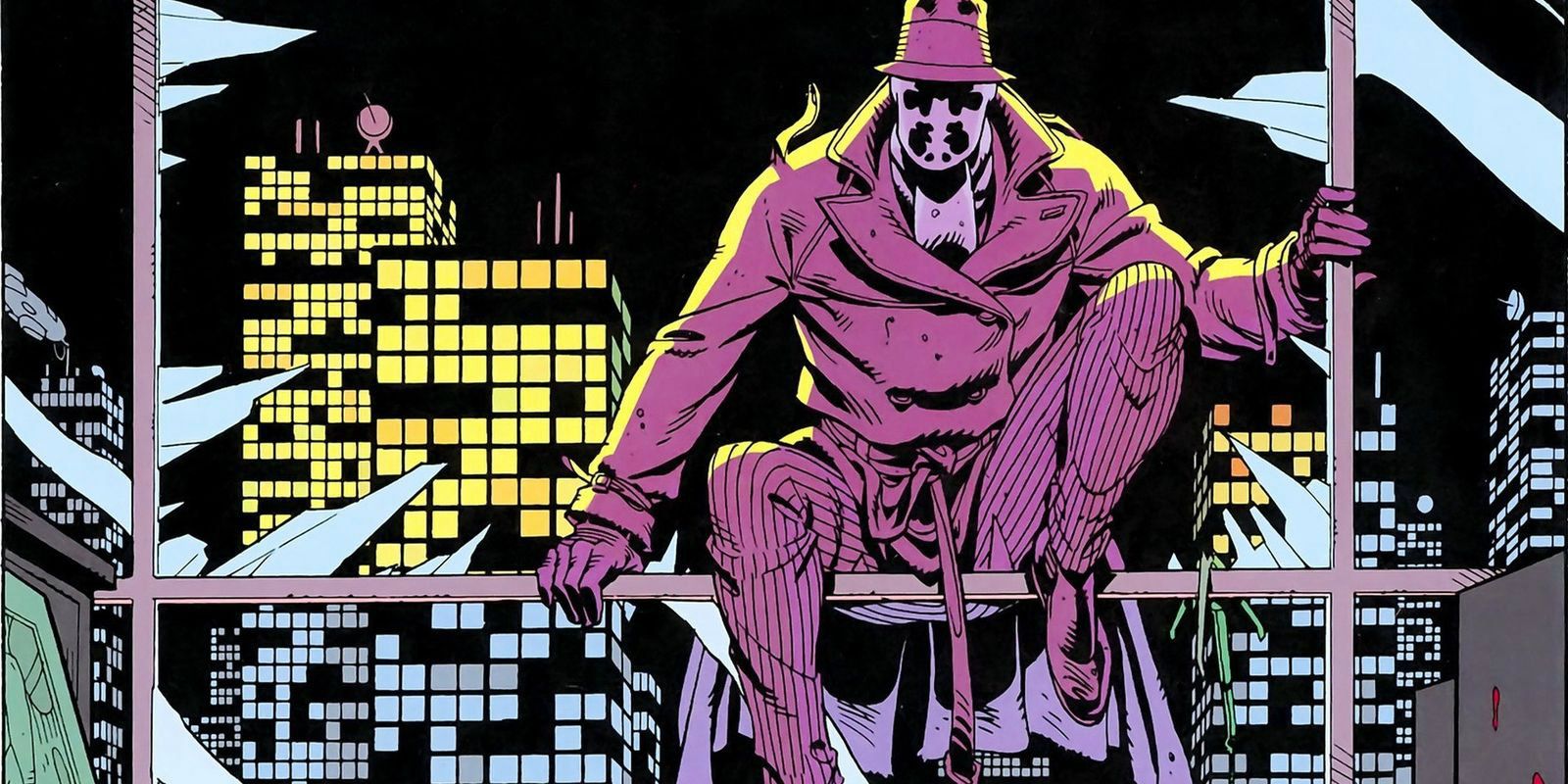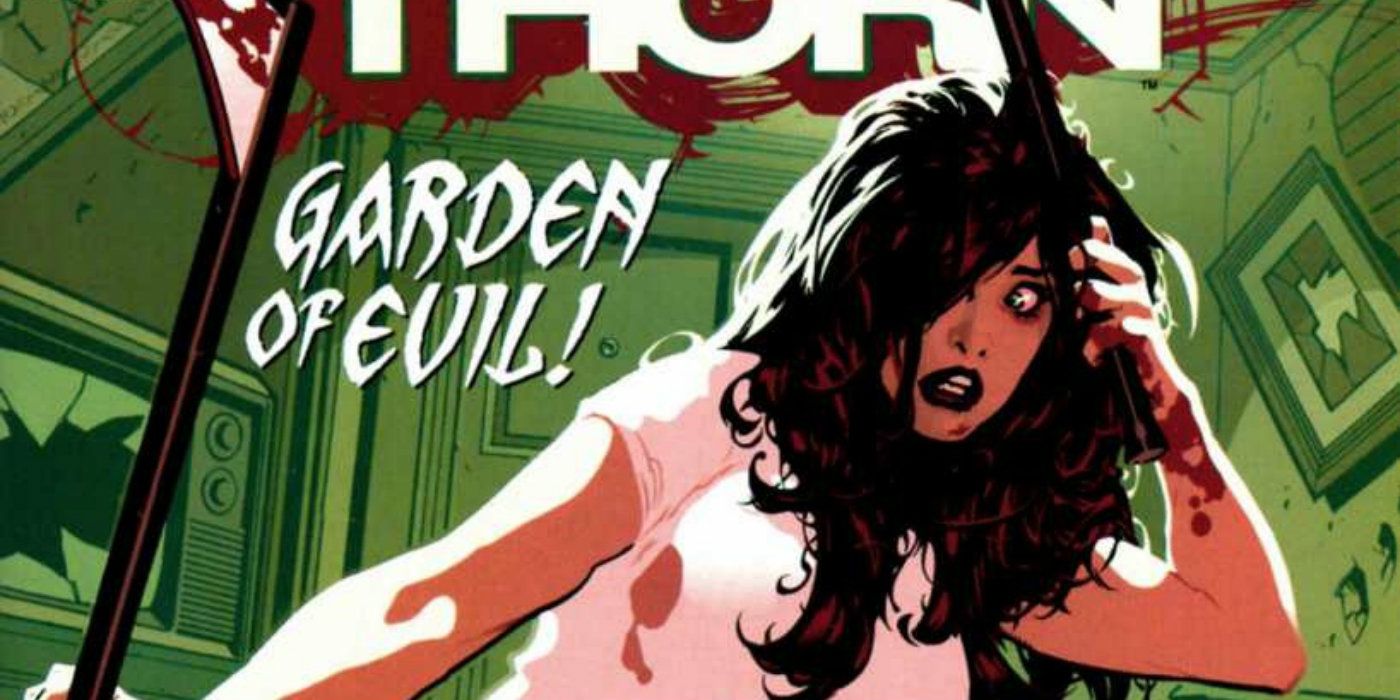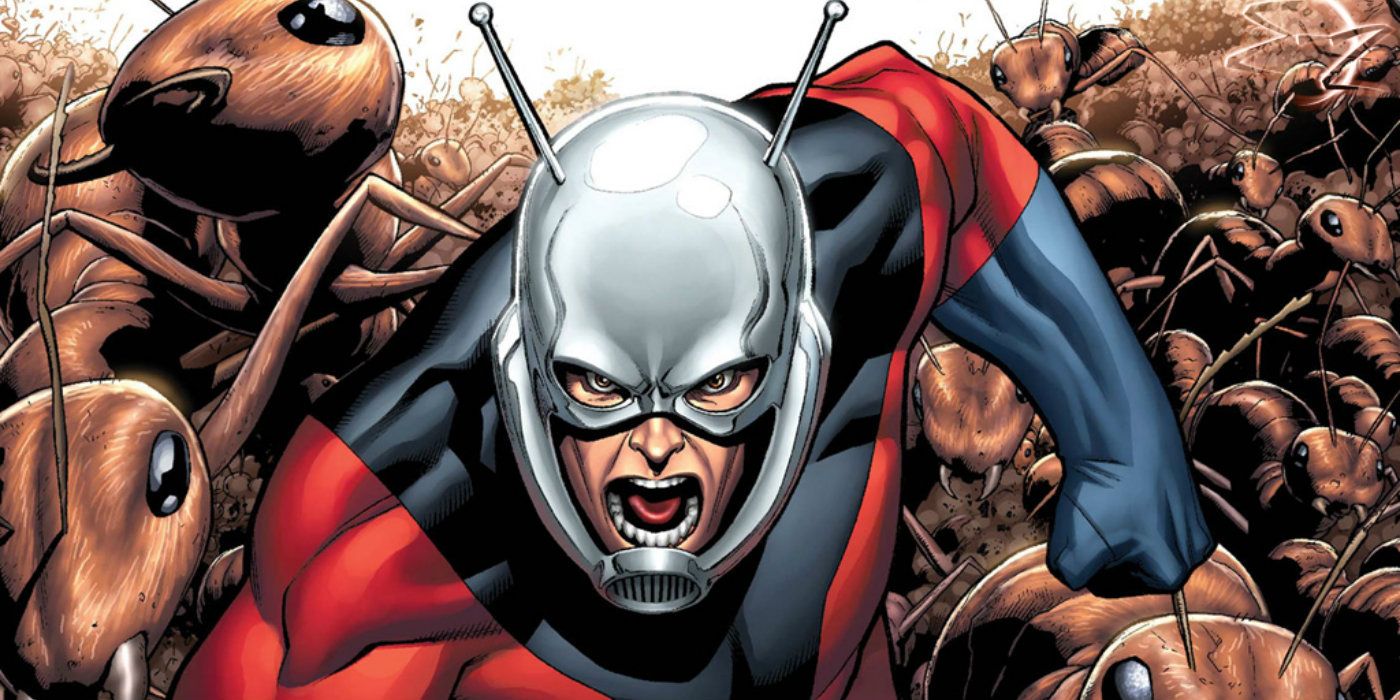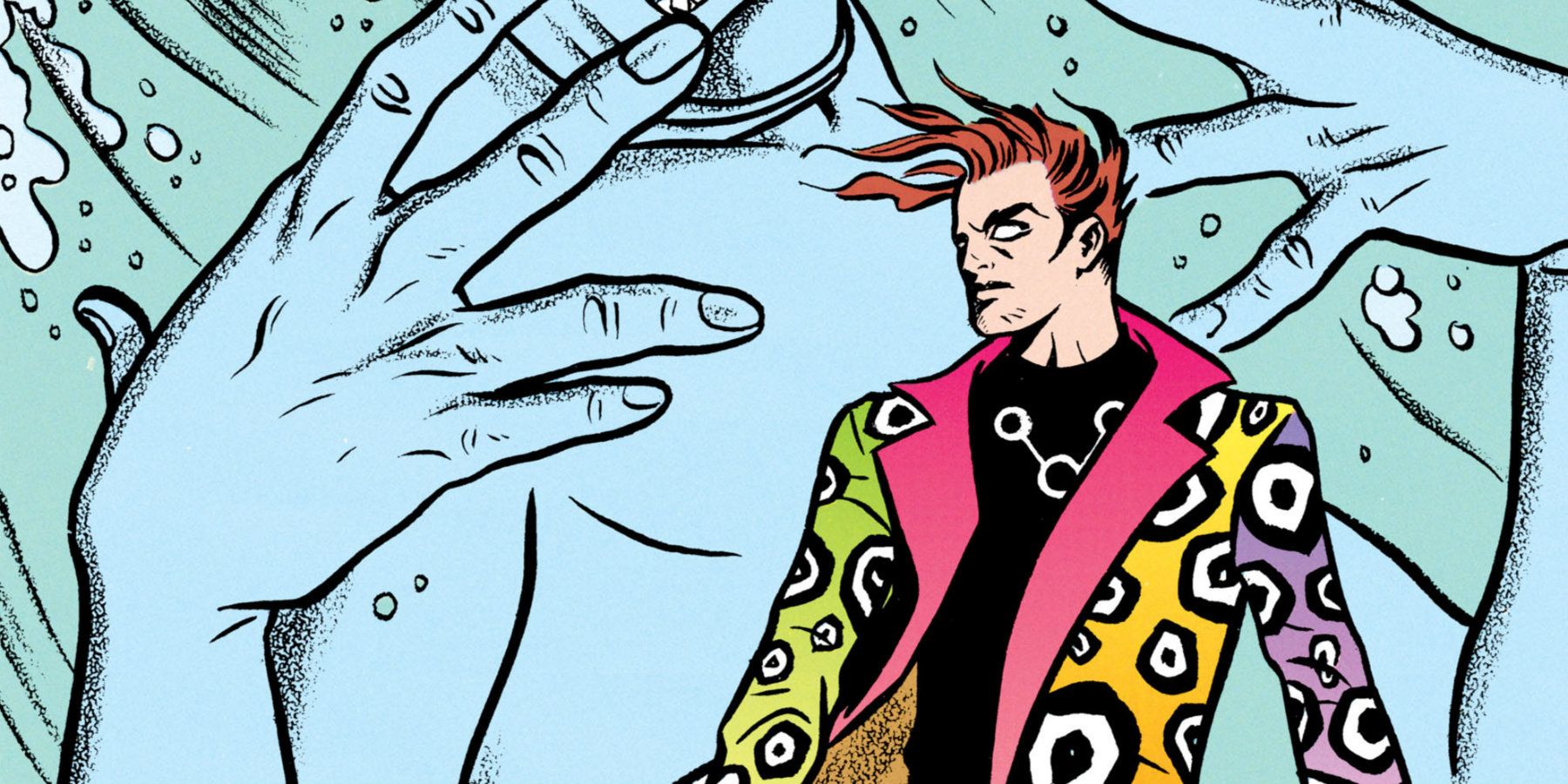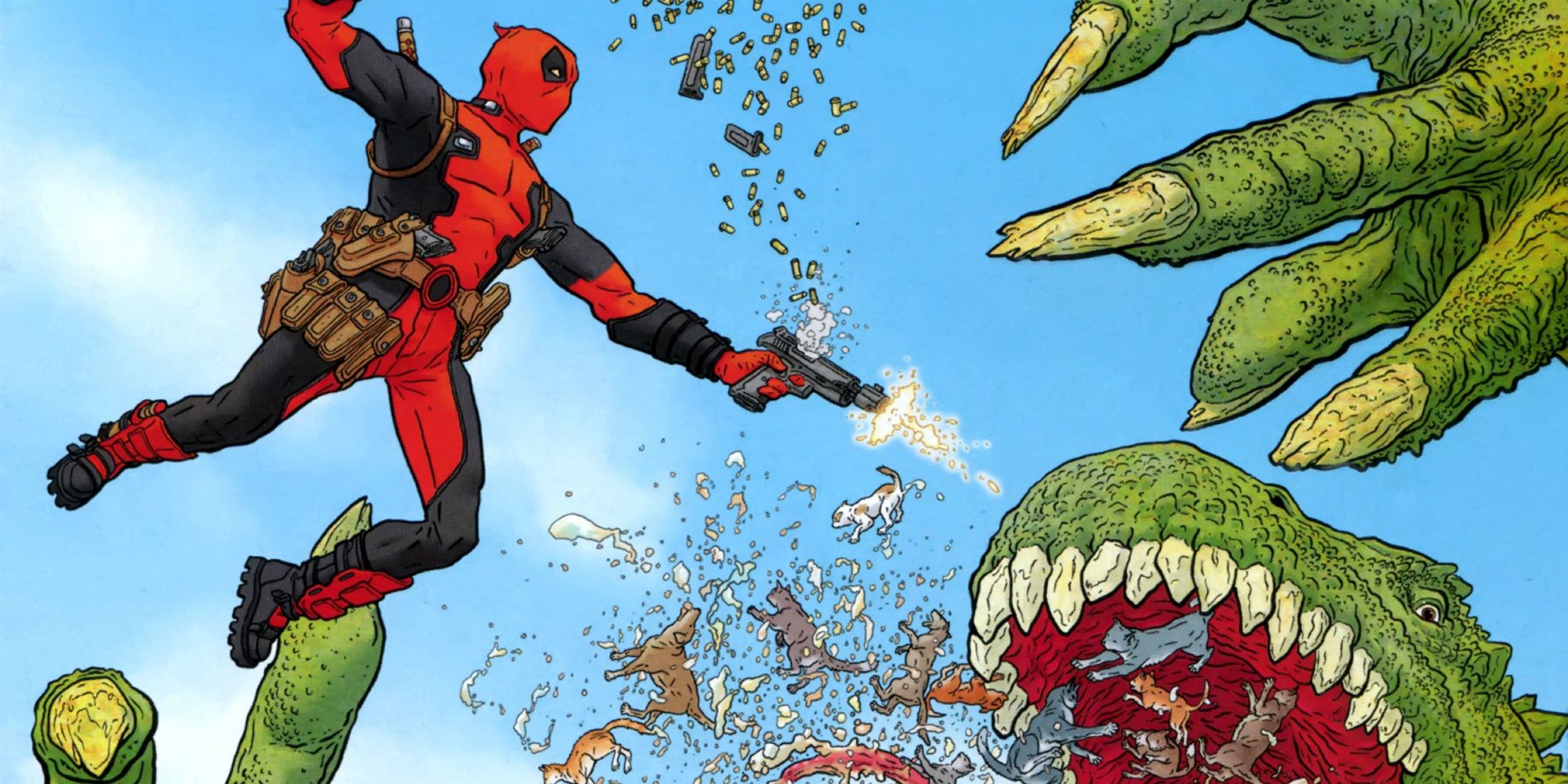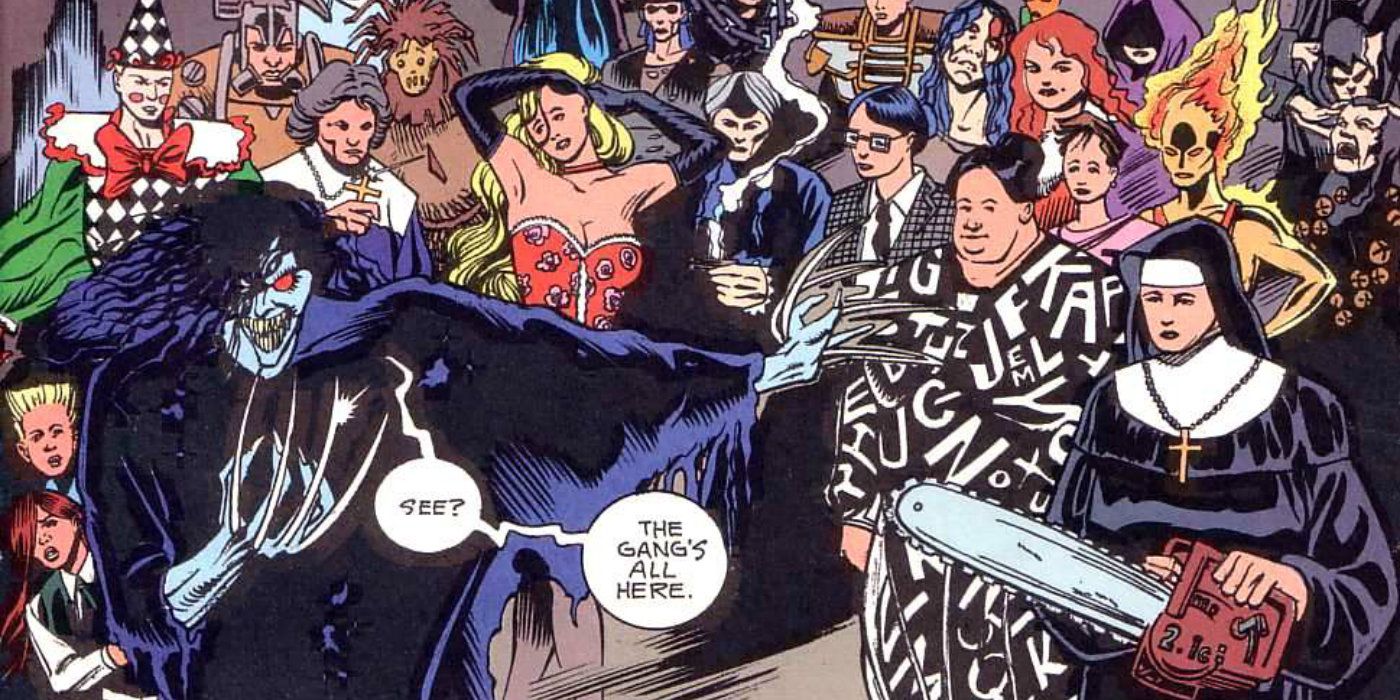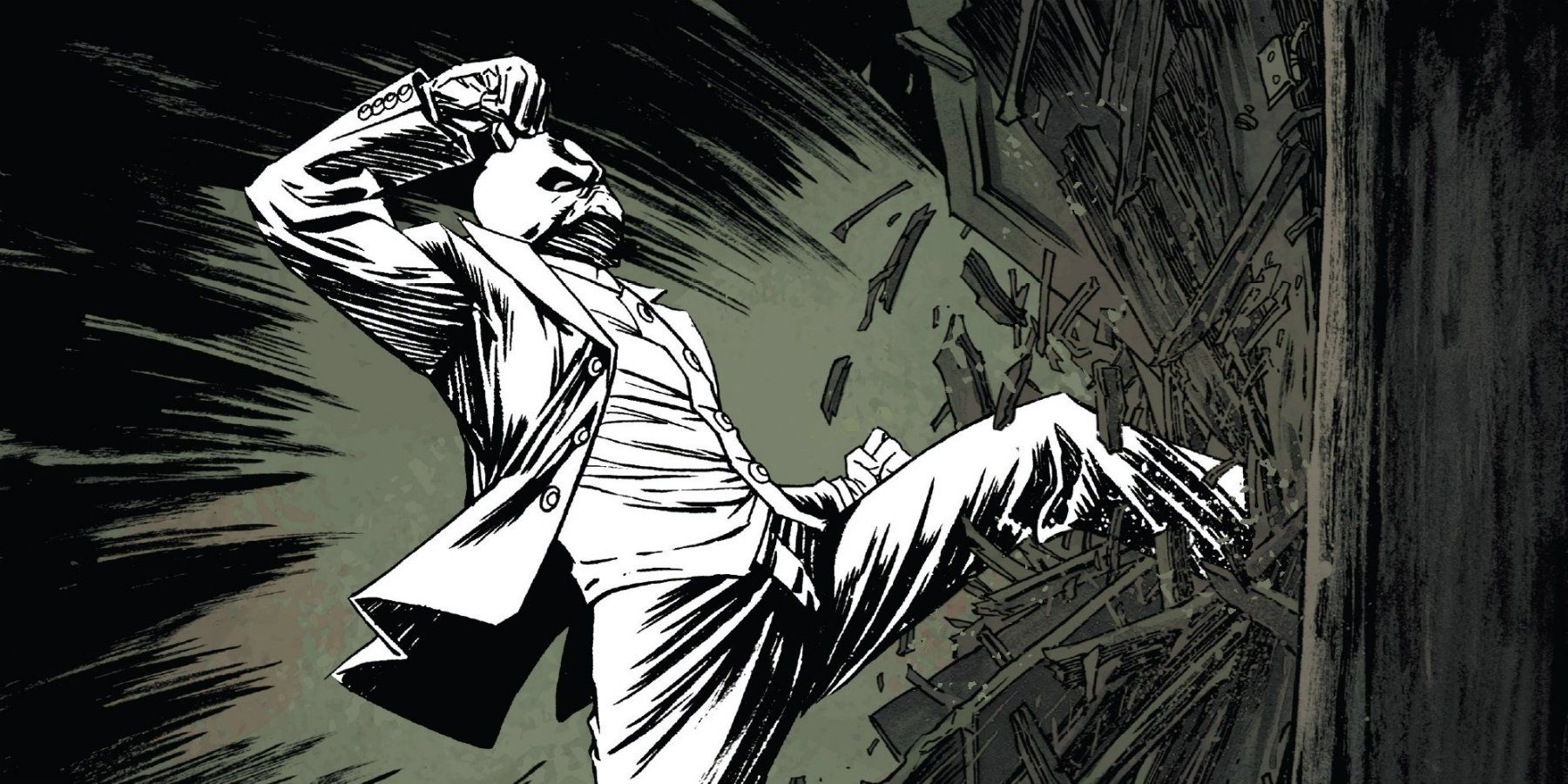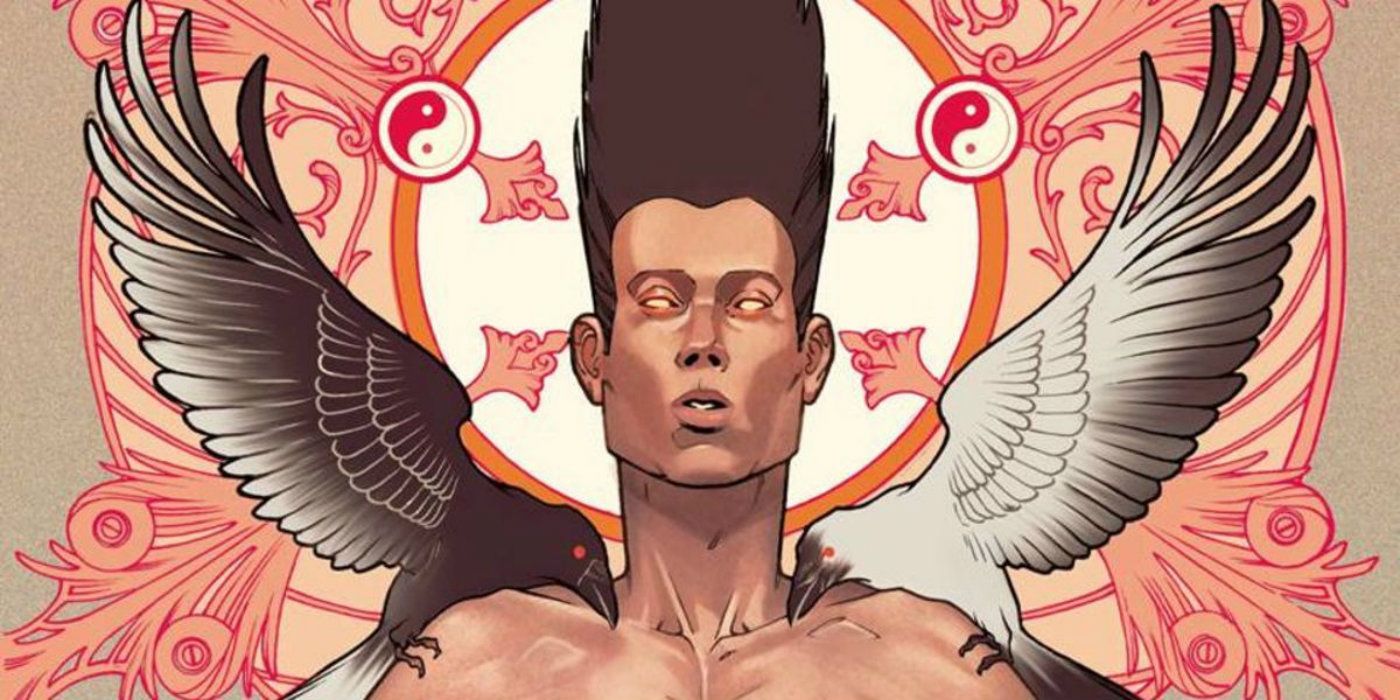Regardless of the kind of superhero you are, you have to be pretty divorced from reality to put on a costume to fight evil. Millions of cops around the world put their lives on the line every day to keep the rest of us safe and don’t bother with dressing up for Halloween. So what makes superheroes like Deadpool or Moon Knight put on a mask to protect the innocent?
RELATED: Legion: 15 Things You Need to Know
Well, in the former’s case, it may have something to do with the fact his face looks like it’s been marinated in battery acid. But for guys like Moon Knight, the reasons are far more complicated. Unbalanced characters like Harley Quinn and Legion are more popular today than they ever were before, so we thought we’d run down a list of superheroes who are the most "perceptively-challenged" in comics. Hmm… maybe we’re the ones who need therapy.
SPOILER ALERT! Spoilers ahead for numerous stories published by Marvel Comics and DC Comics.
15 PUNISHER
The line between hero and villain becomes particularly blurry when considering characters such as the Punisher. A popular antihero created by Gerry Conway, John Romita Sr. and Ross Andru, who first showed up to plague Peter Parker in 1974’s “Amazing Spider-Man” #129, there’s no denying Frank Castle’s mental instability. His single-minded mission to eradicate crime and punish the guilty is a full-blown obsession, with compulsive tendencies. He truly can’t control himself when faced with criminals who need murdering. Spurred by the deaths of his family in a gangland hit, Castle utterly believes his sole purpose in life is to kill criminals — similar yet entirely different than, say, Batman, who refuses to take a life in his own never-ending war on crime.
His propensity for ultra-violence knows no bounds and often borders on the ingenious. He once tried to kill Wolverine with a steamroller and murdered the Russian (the first time around) using an immensely obese man to asphyxiate the hired gun before decapitating him. Essentially a serial killer who targets criminals, the Punisher is a violent man with a violent path, whose first, last and only resort is deadly force. He is as unhealthy as they come.
14 SLAPSTICK
Steve Harmon isn’t mentally challenged in the clinical sense, but his unique superhuman abilities as the zany Slapstick are undeniably crazy. Created by Len Kaminski and James Fry, Slapstick first appeared in his own ongoing series in 1992. A being composed of pure “Electroplasm,” Slapstick’s powers rely on his manipulation of traditional cartoon physics. He possesses a high degree of durability, making him virtually indestructible and his Electroplasmic body is extremely malleable, allowing him to shapeshift into almost any form he can imagine. This latter ability made him a perfect stand-in for Deadpool, who hired him as one of his Mercs for Money, so that he could leverage his newfound popularity on a global scale.
Most recently, Slapstick quit the Mercs to once again strike out on his own as a solo act. He stars in his own ongoing digital series under Marvel’s Infinite Comics online imprint. His time with Deadpool showed a darker side to his personality, rooted in his inability to change back to his original human form. Or maybe it has more to do with his lack of Electroplasmic genitalia as Slapstick. Or maybe both. Yeah, probably both…
13 HAWK
Created by Steve Ditko and Steve Skeates, Hank Hall debuted in 1968 alongside his brother Don, in the pages of “Showcase” #75. As Hawk and Dove, the Hall brothers were agents of the Lords of Order and Chaos, their opposing powers and philosophies complementing each other as the heroic Hawk and Dove. Their origins can be traced back to the turbulent social climate of the late ‘60s, as political activists and war protestors clashed with authorities over a wide range of issues including civil rights and the ongoing Vietnam War.
As Hawk, Hank possesses a "danger sense" that allows him to transform into a super-strong, nigh-invulnerable killing machine. Without his brother Dove to calm his seemingly limitless rage, Hawk’s anger makes him a virtually unstoppable force of destruction. His extreme anger issues make him an unpredictable liability in the eyes of most of his peers in the superhero community. One of the most misused and disrespected characters in DC’s stable, thanks to his stints as two villainous editorial scapegoats (Monarch and Extant), Hawk currently fights crime with Dawn Granger, who took up the mantle of Dove after Don Hall died during “Crisis on Infinite Earths.”
12 CREEPER
Another Steve Ditko creation, the Creeper debuted in 1968’s “Showcase” #73, his particular form of madness originally stemming from a special serum that transformed him into a garish, cackling antihero possessing enhanced strength and a robust healing factor that allowed him to recuperate from virtually any wound. As fallen talk show host Jack Ryder, he tried to save a scientist from a gang of criminals, who grievously wounded him for his efforts. The scientist saves his life with a special serum and implants a device in his wound that manifested his costume. Later retcons removed the existence of a serum, in favor of a pair of implanted devices, one of which injected the drugs directly into his body by the mobsters. These same drugs flood his system every time Ryder becomes the Creeper, causing his unpredictable behavior.
For a short time after the New 52 reboot, the Creeper was reimagined as an oni from feudal Japan who bonded with Ryder in order to spread chaos, tapping into an all-new kind of crazy. Thankfully, DC has rectified this mind-boggling turn of events during its ongoing “Rebirth” initiative and the Creeper has once again returned to his pre-Flashpoint origins.
11 HARLEY QUINN
Our first entry isn’t a superhero in the strictest sense, but then again, the same could be said for many of our choices here. Unlike the other heroes on our list, Harley Quinn first appeared on TV, created by Paul Dini and Bruce Timm for “Batman: The Animated Series.” She proved so popular with viewers as the Joker’s troubled girlfriend, DC introduced her to its mainstream continuity in 1999 in “Batman: Harley Quinn” #1. In fact, she’s the publisher’s most profitable female character, outselling more established heroines like Wonder Woman and Catwoman on a monthly basis.
Most recently she’s been portrayed as more of an antihero, running with Amanda Waller’s Suicide Squad and even working with heroes like Power Girl and the aforementioned Wonder Woman from time to time. Formerly a psychologist, who became fascinated by the Joker’s unique mental illness, Harley seems to suffer from frequent psychotic breaks, often accompanied by acts of extreme violence, all of which stem from her dependence on the Clown Prince of Crime’s love and approval.
10 MISTER E
Created by Bob Rozakis and Jack C. Harris in 1980, Mister E first appeared in “Secrets of Haunted House” #31. Initially not much was known about the mysterious occult investigator, save that he was blind yet could still see thanks to his vaguely defined supernatural abilities. In “The Books of Magic,” Neil Gaiman recruited him as a member of the infamous Trenchcoat Brigade, recasting him as a psychotic vigilante, who wanted to murder young Tim Hunter to prevent him from becoming an evil magic user of immense power. Later retcons delved deeper into his psychosis, revealing a history of physical abuse by his father, who carved out his eyes after his son discovered evidence of the sexual assault of his mother and sister.
Mister E’s perception of good and evil became a thing of absolutes with no room for middle ground. His strict brand of justice was tainted by a zealous belief in the purity of his mission. In the New 52, Mister E was reimagined as one of John Constantine’s villains, an insane mage notorious for his cruelty and responsible for his own blinding, after casting a spell that caused his eyes to bleed out.
9 FOOLKILLER
There have been three different vigilantes who have used the Foolkiller identity over the years. The most notorious of these is Greg Salinger, who debuted in 1977’s “Omega the Unknown” #8, created by Roger Stern and Lee Elias. Salinger heard about the first Foolkiller while in prison and upon his release located his costume and trademark purification gun, using them to go on a killing spree targeting those “fools” who didn’t live up to his standards as positive contributing members of society.
He was eventually incarcerated in a mental institution for criminals, where it was discovered he was helping a third killer punish fools via an online message board. He eventually ran into Deadpool and joined the Mercs for Money, while attaining a degree in psychology. He was most recently seen working for a rogue faction of S.H.I.E.L.D. as a psychiatrist hired to rehabilitate criminals. In this capacity, if treatment wasn’t successful, Salinger was allowed to cut his losses and kill his patients to prevent them from engaging in further criminal activity. Even for this list, that’s pretty twisted.
8 RORSCHACH
Alan Moore and Dave Gibbons’ pastiche of Steve Ditko’s the Question first appeared as the vigilante Rorschach in 1986, in the first issue of the game-changing series “Watchmen.” Adhering to Ditko’s original conception by casting him as a character who believes in strict moral absolutes, Rorschach’s investigation into the assassination of fellow hero the Comedian was plagued by revelations of his own murderous tendencies. During a court-mandated psychiatric evaluation, it was revealed Rorschach was abused by his prostitute mother as a child, coloring his perception of women and sexuality for the rest of his life.
He suffered a mental breakdown during a particularly gruesome kidnapping case that involved the murder of a young girl. When Rorschach discovered evidence that the killer had fed the girl’s remains to his dogs, he butchered them using a meat cleaver, then burned the monster’s workshop, with him inside handcuffed to a stove. From that point onward, there was only Rorschach, his civilian identity no longer capable of facing such mounting horrors while fighting crime.
7 ROSE & THORN
Rose Forrest first appeared as Thorn in 1970, in “Superman’s Girlfriend, Lois Lane” #105. Created by Robert Kanigher and Ross Andru, the character was a very loose reboot of the classic Green Lantern villain, Rose Canton. Rose was an unfortunate young woman who was diagnosed with multiple personality disorder, after her father was murdered by the 100, a powerful crime syndicate operating in Metropolis. She created the distinct persona of Thorn as a vehicle to gain vengeance on the organization that killed her father. As Thorn, Rose is an expert combatant and markswoman, whose rage-fueled strength gives her an edge in battle.
Although she’s only appeared sporadically over the years, Thorn did appear in her own 2004 miniseries, in which scribe Gail Simone explored her mental illness in more detail and added a third personality called “Mom,” who was based on Rose’s memories of her late mother. A stint in Simone’s “Birds of Prey” followed, but the character was totally revamped during the New 52 reboot, returning her to her Golden Age roots as a teenaged Rose Canton, whose split personality emerges as a result of bullying.
6 HANK PYM
Hank Pym was never the most mentally stable of the Avengers. A founding member of the iconic super-team, he employed several heroic personas over the course of his career, suffering numerous mental breakdowns along the way. The most infamous of these episodes came during his time as Yellowjacket, whose arrogance and reckless behavior was driven by Pym’s feelings of inadequacy as both a superhero on a team of powerhouses and as a husband to the Wasp. His deep-seeded insecurity culminated in a savage attack on the Elfqueen that landed him in hot water with his Avengers teammates.
In a desperate bid to prove his worth to the team, he created a false threat that was timed to attack the Avengers during his trial. However, the Wasp learned of his mad scheme and tried to prevent him from attacking his friends, resulting in Hank viciously smacking her. His plot went south nonetheless and he had to be saved by his own wife. He left the Avengers in shame but would return to the team several times in the intervening years. Most recently, Hank bonded with his evil creation Ultron, becoming even more unstable, as his personality was subsumed by the killer robot’s programming.
5 SHADE, THE CHANGING MAN
Wow, there sure are a lot of connections to Steve Ditko on this list. While we’re not exactly sure what that means, we can’t help but feel that it bears mentioning. Next up is Shade, the Changing Man, a Ditko creation who hails from another dimension and wears a stolen M-Vest, which generates a powerful protective force field that appears as a grotesque version of its owner.
Peter Milligan, Chris Bachalo and Brendan McCarthy reimagined Shade as an extra-dimensional poet, who traveled to Earth to prevent a rising tide of insanity from rolling across America. Milligan’s version of the character wore a madness vest that was capable of not only altering peoples’ perceptions of Shade but of warping reality on a fundamental level. Shade briefly survived the New 52 reboot, appearing as a member of Justice League Dark, until he succumbed to a mental breakdown and disappeared into the Area of Madness. Recently, as a part of DC’s Young Animal imprint, a new Shade, the Changing Girl has followed the late Rac Shade’s path to Earth, after stealing the madness vest from a museum and using it to travel to Earth.
4 DEADPOOL
So utterly crazy he can break comics’ vaunted fourth wall at will, Deadpool has evolved into one of the craziest superheroes in comics, since his first appearance in “New Mutants” #98. Originally a one-dimensional thug-for-hire, writers such as Joe Kelly infused Wade Wilson with a flamboyant personality scarred by severe mental and physical torture, while a member of the Weapon X program. Cursed with a souped-up healing factor that puts Wolverine’s to shame, Wade’s unique brand of mental illness is exacerbated by his neurons’ constant regeneration.
However, knowing the cause of an illness — especially mental illness — doesn’t always translate into a clear-cut cure. This fact hasn’t stopped Wade from making inroads into the Marvel Universe’s superhero community. Long considered an antihero rather than outright villain, Deadpool currently serves as an Avenger and has been a member of X-Force in the recent past. Insanely popular thanks to motormouth Ryan Reynold’s spot-on portrayal in last year’s monumental feature film, Deadpool’s continued success doesn’t seem like it’s going to slow down any time soon.
3 CRAZY JANE
This Grant Morrison creation was a fixture on the scribe’s critically-acclaimed run on Doom Patrol and possesses one of the most tragic origin stories in all of comics. She first appeared in “Doom Patrol” #19 as a patient at the psychiatric hospital where Robotman seeks help for his own issues. A victim of sexual violence from a young age, Kay Challis’ psyche fractured into 64 different personalities in a desperate bid to cope with the resulting psychological trauma. When the Dominators detonated their gene bomb during “Invasion!,” all of her personalities gained a different super power, each one reflecting an aspect of her shattered mind.
As a member of Doom Patrol, she displayed an eclectic array of abilities, including (but not limited to) super strength, pyrokinesis, telepathy, teleportation and energy manipulation. Crazy Jane was the most dominant persona but was unable to control how or when her powers would manifest. She gained some measure of closure after facing her childhood traumas, resulting in a more stable composite being whose multiple personalities were integrated into a single persona. Kay and Robotman shacked up for a time, until it was revealed her many personalities still existed, a fact that led to their break-up.
2 MOON KNIGHT
Created by Doug Moench and Don Perlin, the vigilante known as Moon Knight first appeared in 1975’s “Werewolf by Night” #32. Originally created as a villain hired by the Secret Empire to kill Jack Russell, Moon Knight’s popularity with readers led to his own feature in “Marvel Premiere,” where it was revealed he was a vigilante who had infiltrated the Secret Empire using a villainous persona. Although often considered to be Marvel’s version of Batman, the two nocturnal vigilantes couldn’t be more different. For one thing, in spite of an unhealthy obsession with his war on crime, Batman is relatively sane.
Moon Knight, on the other hand, has suffered from the effects of his use of numerous alter egos in his crimefighting career. Singly or together, Moon Knight has used the names Marc Spector, Jake Lockley and Steven Grant as secret identities and recently developed a new superhero persona called Mr. Knight. In the latest volume of his ongoing series, it was revealed that Moon Knight’s multiple personalities are one of his greatest assets, allowing him to fight across realities and do battle with the gods of the Egyptian pantheon.
1 LEGION
Currently the star of his own hit TV series on FX, Legion is the son of Professor Charles Xavier and one of the most powerful telepaths in the Marvel Universe. Created by Chris Claremont and Bill Sienkiewicz, David Haller first appeared in 1985’s “New Mutants” #25. Suffering from dissociative identity disorder, David’s mind has been split into over 200 different personalities. Like Crazy Jane, each one of these personalities boasts its own mutant power. Originally, there were only three embedded personas inhabiting David’s psyche, but over the years, many more have been discovered.
Some of the powers he has displayed over the years include pyrokinesis, telekinesis, telepathy, electrokinesis, the ability to turn people to salt, energy manipulation and the ability to alter reality on a foundational level. He has proved both a staunch ally and dangerous foe to his father’s X-Men, although he has most recently been depicted as a hero, even if he’s totally unpredictable. In the comics, his last act was erasing himself from existence to avoid killing his girlfriend Blindfold (although a remnant remains in her psyche), herself a powerful telepath and one of the few people who truly understood his unique affliction.
Are you crazy for justice? Let us know which therapy-needing do-gooders we missed in the comments!

